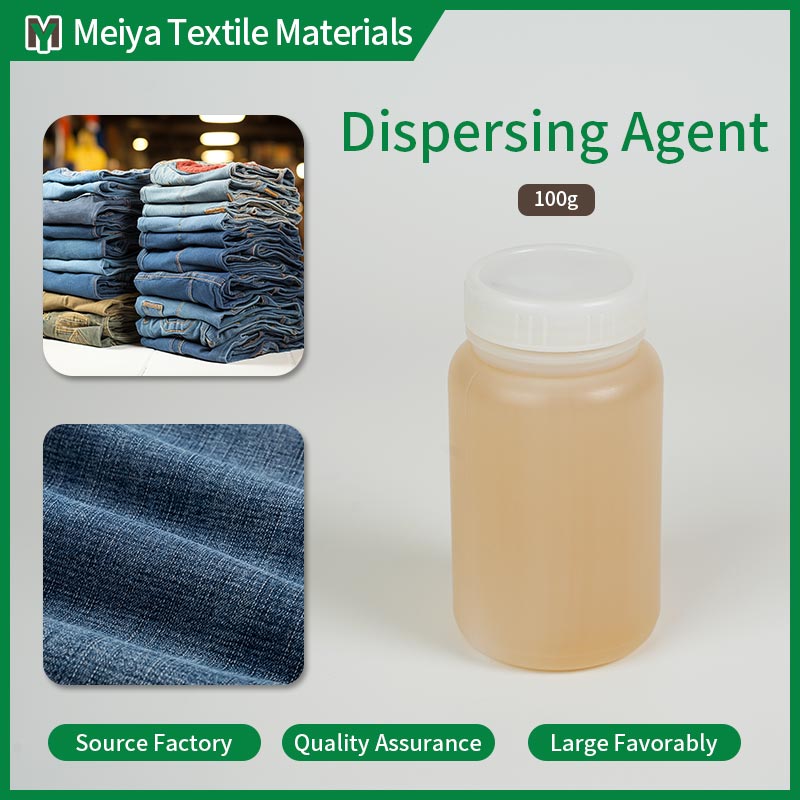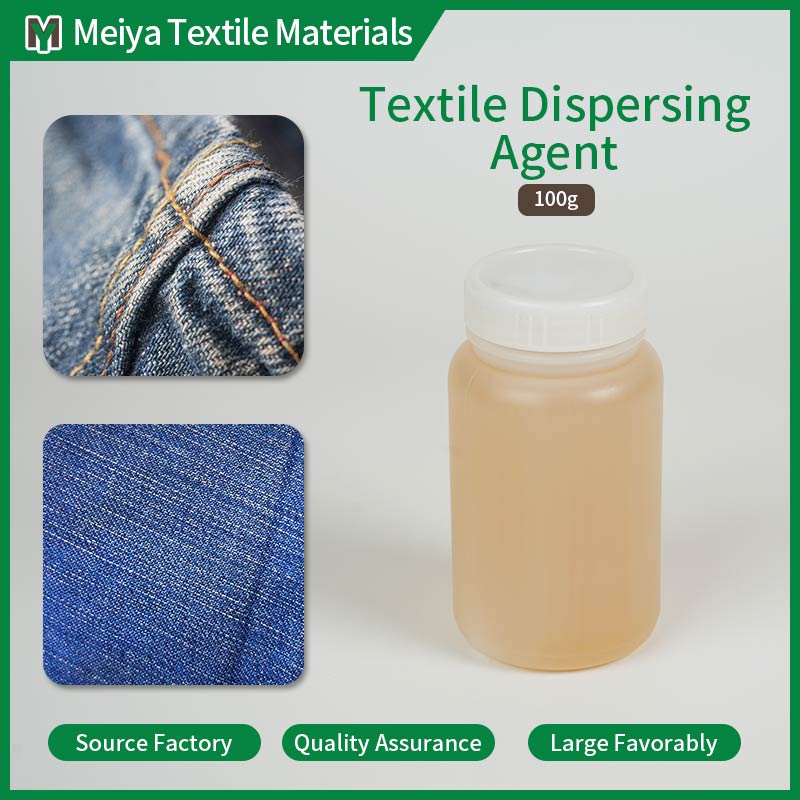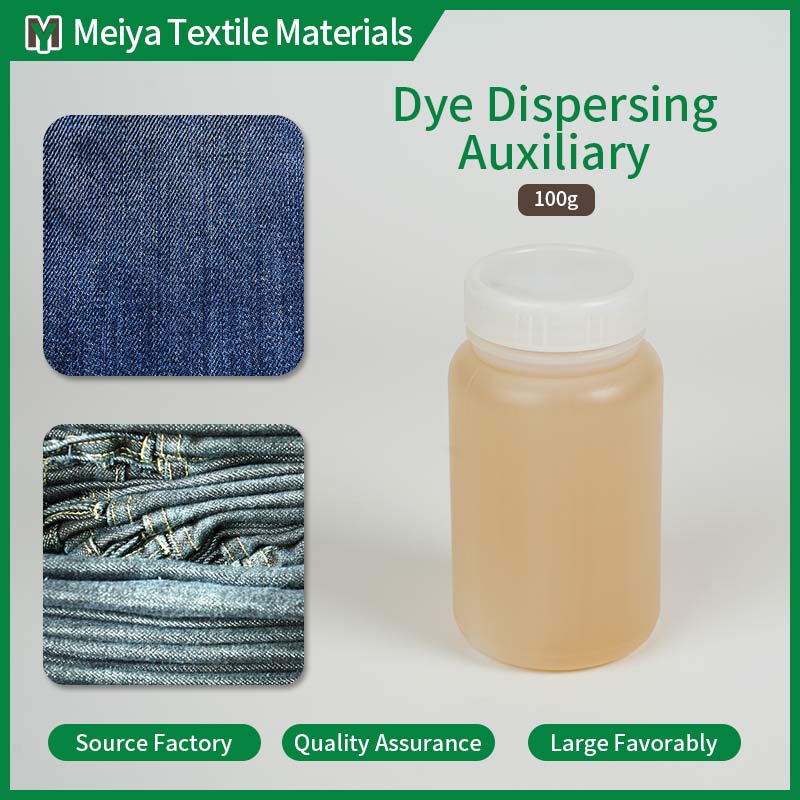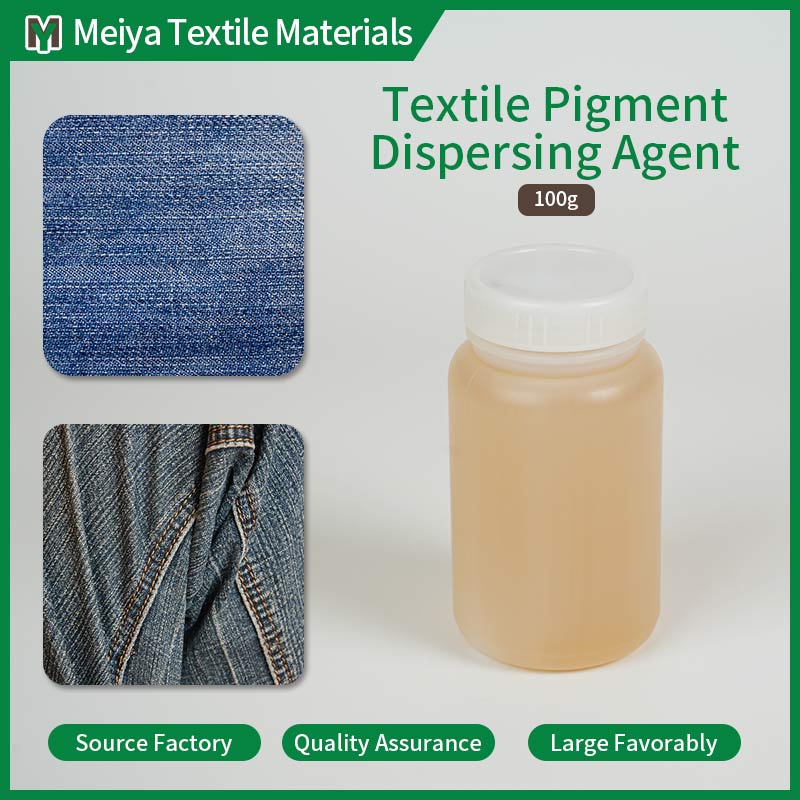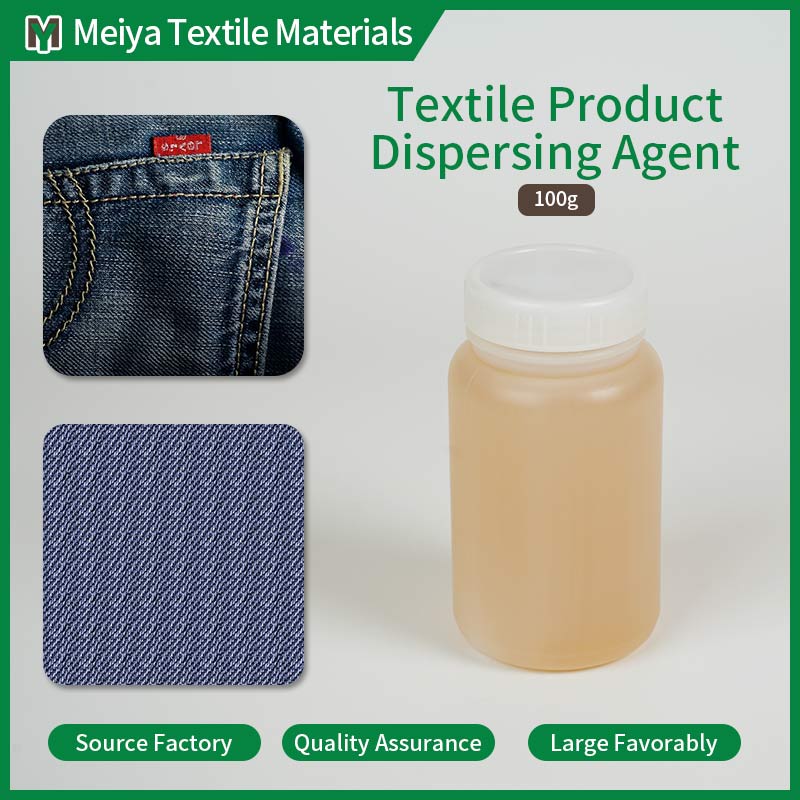Textile Processing Dispersing Agent
Please click the button below to contact us.
Introduction:Textile Processing Dispersing Agent is a chemical additive used in textile printing and dyeing processes to help dyes, pigments and other processing materials disperse evenly in liquid media.
Product Description
Textile Processing Dispersing Agent is a chemical additive used in textile printing and dyeing processes to help dyes, pigments and other processing materials disperse evenly in liquid media. Its main function is to change the surface properties of solid particles, reduce the interaction between particles, prevent particles from agglomerating, and make dyes, pigments, etc. dispersed evenly and stably in liquid media.
Textile Processing Dispersing Agent Features:
Improved dispersibility: Textile Processing Dispersing Agents disperse dye particles evenly in the liquid medium and prevent particles from aggregating by reducing the surface tension of the dispersion system. Because it adsorbs on the surface of the particles, it reduces the mutual attraction between the particles, thereby achieving a good dispersion effect. By reducing the interaction force between the particles, the probability of dye particles being evenly distributed in the medium is significantly increased.
Enhanced stability: Dispersants can improve the stability of the dispersion system and prevent dye particles from settling or agglomerating during storage and processing. In the dye bath, dispersants adsorb on the surface of dye particles to form a protective layer that prevents particles from approaching and aggregating each other, and can maintain the uniform dispersion state of dye particles even when the dye bath is disturbed by external factors.
Improved color performance: By ensuring uniform dispersion of dye particles, dispersants help improve the color uniformity and brightness of dyed fabrics. When dye particles are evenly distributed in the dye bath and evenly absorbed by the fibers, the color of the fabric will be more consistent, without color difference or color spots. At the same time, because the dye particles can contact and be absorbed by the fibers more effectively, the color after dyeing will be brighter and fuller.
Improve rheological properties: Dispersants have a significant effect on the rheological properties of the dispersed system, can reduce the viscosity of the system and improve fluidity. In a high-concentration dye bath, the addition of dispersants can effectively control the viscosity of the system and prevent the system from being too viscous and difficult to handle. This makes it easier to evenly stir and circulate the dye bath during the dyeing process, improving dyeing efficiency.
Improve production efficiency: The use of dispersants can shorten dyeing time and improve production efficiency. Since dispersants can quickly disperse the dye in the dye bath, the dye particles are evenly distributed around the fiber, thereby accelerating the adsorption and penetration of the dye. Experiments have shown that after using dispersants, the dyeing time can be shortened by 20%-30%, while improving dyeing uniformity and fastness.
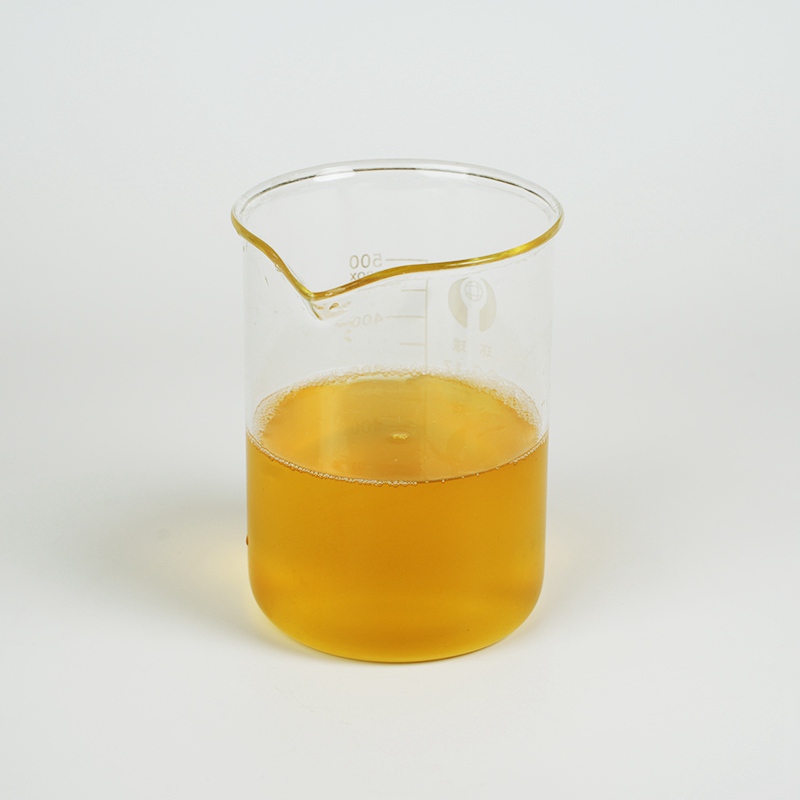
Textile Processing Dispersing Agent Application:
Dyeing process: In the textile dyeing process, Textile Processing Dispersing Agent is indispensable. By adding an appropriate amount of dispersant to the dye bath, the aggregation of dye particles can be prevented, and the dye can be evenly distributed in the dye bath, thereby achieving uniform dyeing. In the dyeing process, the dispersant helps the dye particles to better penetrate into the fiber and improve the dyeing fastness. At the same time, the dispersant can also improve the dyeing efficiency, reduce the dyeing time, and reduce energy consumption.
Printing process: In textile printing, dispersants are used to prepare color pastes to ensure that the pigments are evenly dispersed in the color paste. In the printing process, dispersants help the pigments to be evenly transferred to the fabric to form clear and full patterns. At the same time, dispersants can also improve the fastness of printed fabrics and prevent the pigments from falling off or fading during subsequent processing.
Finishing process: In the textile finishing stage, dispersants can be used to disperse and remove impurities on the fiber. In pre-treatment processes such as desizing, scouring, and bleaching, dispersants can help disperse and remove impurities such as slurry, oil stains, pigments, etc., improve the cleanliness and dyeability of the fiber, and improve the quality of the fabric.
Yarn production: During the yarn production process, dispersants can be used to improve the surface quality of the yarn. During the sizing and post-treatment of the yarn, adding an appropriate amount of dispersant can evenly disperse the slurry particles, so that the slurry adheres better to the yarn, improve the strength and wear resistance of the yarn, and reduce the yarn breakage rate during the weaving process, thereby improving production efficiency.
Pretreatment process: In the pretreatment process of textiles, such as desizing, scouring, and bleaching, dispersants can be used to disperse and remove impurities on the fiber. For example, during the desizing process, dispersants can help disperse the slurry particles, making them easier to remove and improving the desizing effect; during the scouring process, they can evenly disperse various auxiliaries, enhance the scouring effect, and improve the water absorption and dyeability of the fiber.
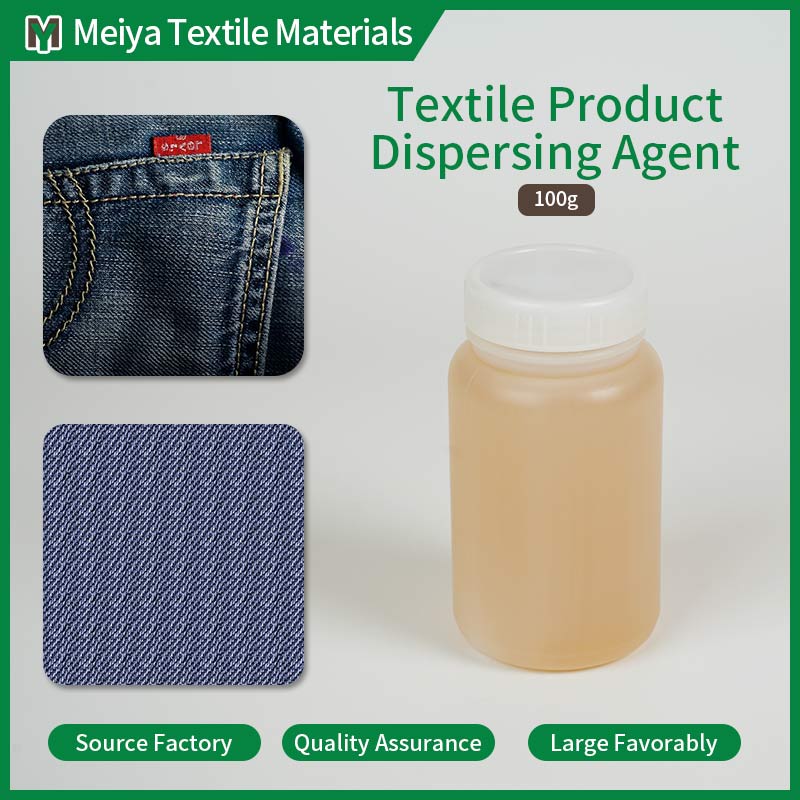
Textile Processing Dispersing Agent Maintenance:
Storage environment control: Dispersants should be stored in a cool, dry, well-ventilated warehouse, away from direct sunlight, and the storage area should be away from fire, heat sources and strong oxidizing substances. The temperature should be controlled at 5℃-35℃, and the relative humidity should be maintained at 30%-70%. Too high or too low temperature will affect the performance of the dispersant, resulting in a decrease in its dispersion effect. Regularly check the temperature and humidity of the warehouse to ensure that the storage environment meets the requirements.
Operation specification: When using dispersants, operators must strictly follow the product instructions. When preparing the dispersion system, first add the dispersant to the liquid medium, stir it thoroughly to dissolve it evenly, and then slowly add the dye or pigment while continuing to stir to ensure that the particles can be fully wetted and dispersed by the dispersant. According to different types of dyes and pigments, adjust the amount of dispersant added and the stirring speed. At the same time, pay attention to the compatibility of the dispersant with other additives to avoid incompatible reactions.
Packaging and transportation notes: The packaging should be sealed, moisture-proof, and leak-proof materials, such as plastic barrels, composite bags or metal barrels. For large-volume packaging, ensure that the packaging container is well sealed to prevent leakage during transportation. Handle with care during transportation to avoid throwing and collision. The height difference during loading and unloading should be controlled within 0.5 meters to prevent the packaging from breaking. The means of transport should be kept clean and dry, and should not be mixed with toxic, harmful, and corrosive items. Long-distance transportation should stop every 4-6 hours to check the integrity of the packaging. If there is leakage, it should be handled in time.
Usage and concentration control: According to different application systems and dye or pigment types, the amount of dispersant used and the concentration of the dispersion system should be accurately controlled. Too low a dosage may cause uneven dispersion of dyes or pigments, affecting the appearance and performance of the product; too high a dosage may increase costs and even have a negative impact on the system, such as reducing the stability of the system. Generally, in the dyeing process, the amount of dispersant used is 5%-15% of the dye mass; in the printing process, the amount added is 5%-10% of the total color paste. At the same time, the concentration of the dispersion system should be regularly tested, such as sampling and testing every 4-6 hours to ensure that it is within the specified range. If there is any deviation, it should be adjusted in time.
Equipment cleaning and maintenance: Equipment that uses dispersants, such as dyeing machines, printing machines, mixers, etc., must be cleaned and maintained promptly after each use. Use a special detergent to clean the inside of the equipment to remove residual dyes, dispersants and other additives to prevent them from solidifying in the equipment and affecting the effect of the next use. At the same time, regularly check whether the equipment's pipes, nozzles, seals and other parts are blocked or damaged. If blockage or damage is found, rinse with clean water or replace parts in time to ensure the normal operation of the equipment and improve the use effect of the dispersant.
Textile Processing Dispersing Agent FAQ:
When should Textile Processing Dispersing Agents be used?
They should be used when uniform dispersion of the substance is critical, such as when dyeing, printing, or applying a finishing treatment to textiles. They are particularly important when working with sensitive fabrics or complex designs, where uniform color distribution is critical.
Are dispersants for textile products safe to use on textiles?
Yes, dispersants are formulated to be safe for textile applications when used according to the manufacturer's guidelines. They are designed to minimize adverse effects on fabric properties while maximizing dispersing performance.
How are dispersants for textile products applied?
They are typically added to the dye bath, print paste, or finishing solution during the preparation process. The amount used depends on factors such as the type of dye or finish, fabric composition, and desired results.
Do dispersants for textile products impact the environment?
Manufacturers work hard to develop environmentally friendly dispersants that meet regulatory standards. These agents are designed to minimize environmental impact while maintaining high performance for textile applications.
Can dispersants for textile products be used in different textile processes?
Yes, these dispersants are versatile and can be used in a variety of textile processes, including dyeing, printing, and finishing. They are compatible with different types of dyes, pigments, and finishes used in textile manufacturing.
What role do dispersants play in quality assurance for textile products?
They play a key role in ensuring consistent quality and performance of textile products by facilitating the uniform dispersion and effective application of dyes and finishing agents.

